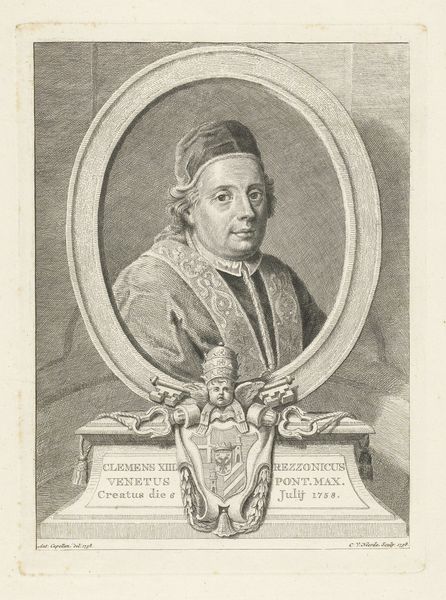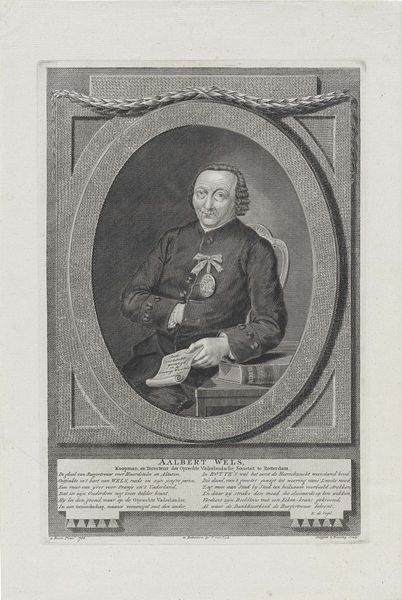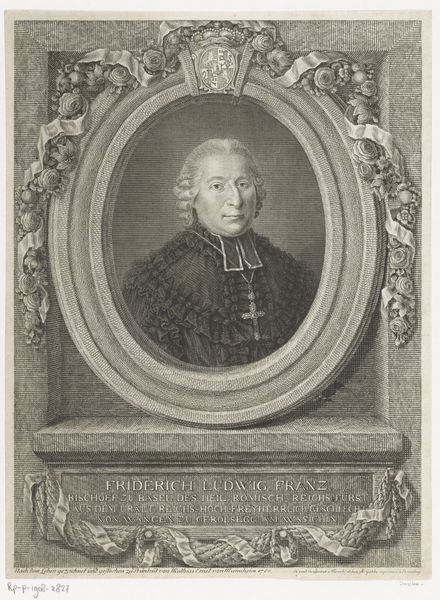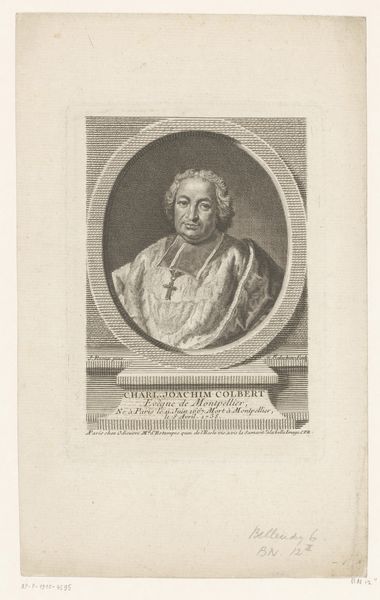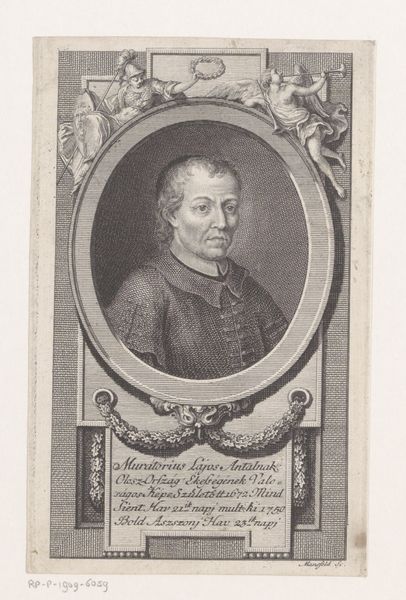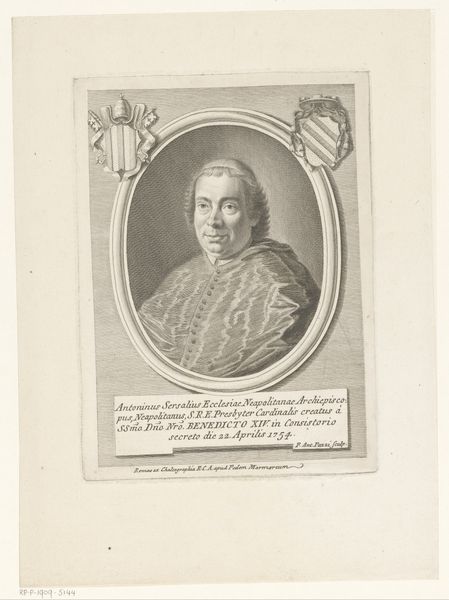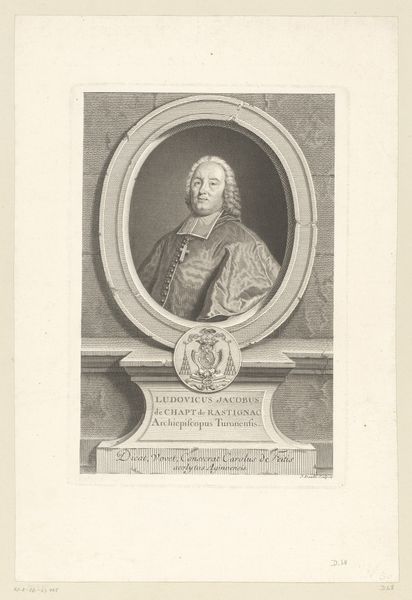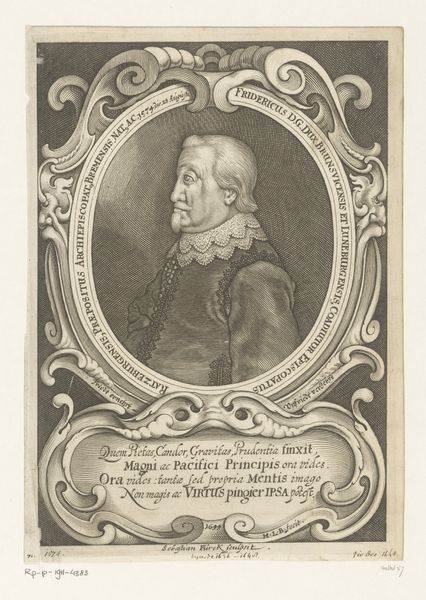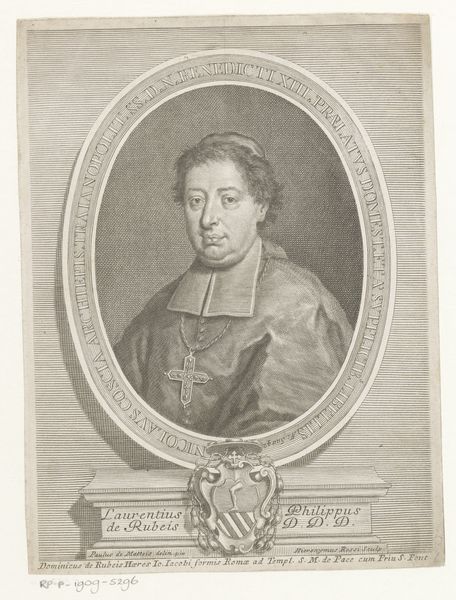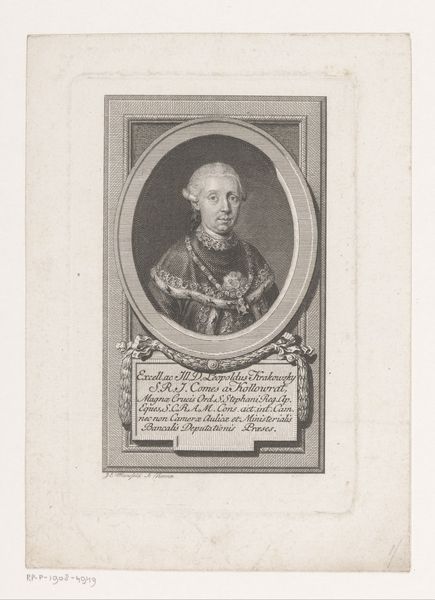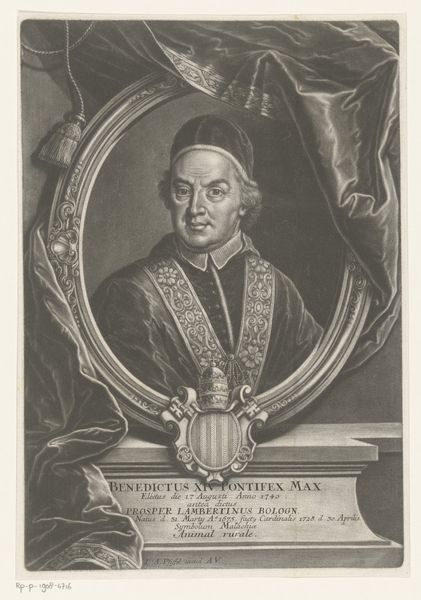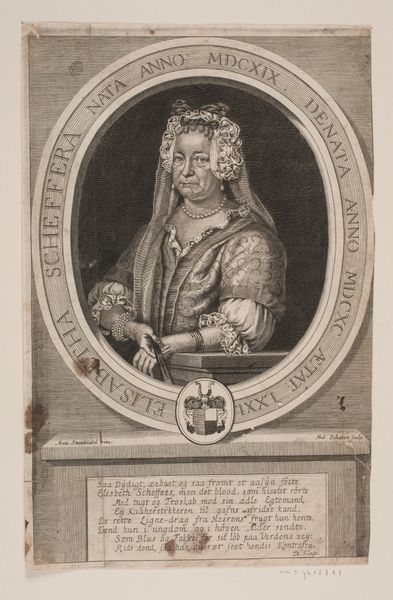
drawing, print, paper, engraving
#
portrait
#
drawing
#
neoclacissism
# print
#
paper
#
history-painting
#
engraving
Dimensions: height 286 mm, width 207 mm
Copyright: Rijks Museum: Open Domain
Johann Friedrich Bause created this portrait of Christian Gottlob Frege using engraving, a printmaking technique dating back to the 15th century. It begins with a metal plate, traditionally copper. The artist then uses a tool called a burin to carve lines directly into the plate’s surface. The depth and spacing of these lines determine the amount of ink that the plate will hold, and therefore the darkness of the printed line. This painstaking process requires a high degree of skill, each cut demanding precision and control to capture the subtle nuances of light and shadow in Frege's face and clothing. As a print, this image could be reproduced many times. This was an era in which images began to circulate in the wider world, contributing to the formation of public opinion and the construction of celebrity. So, while portrait painting was still largely reserved for the elite, printmaking allowed for a wider distribution of images, democratizing access to representation, to a degree.
Comments
No comments
Be the first to comment and join the conversation on the ultimate creative platform.
